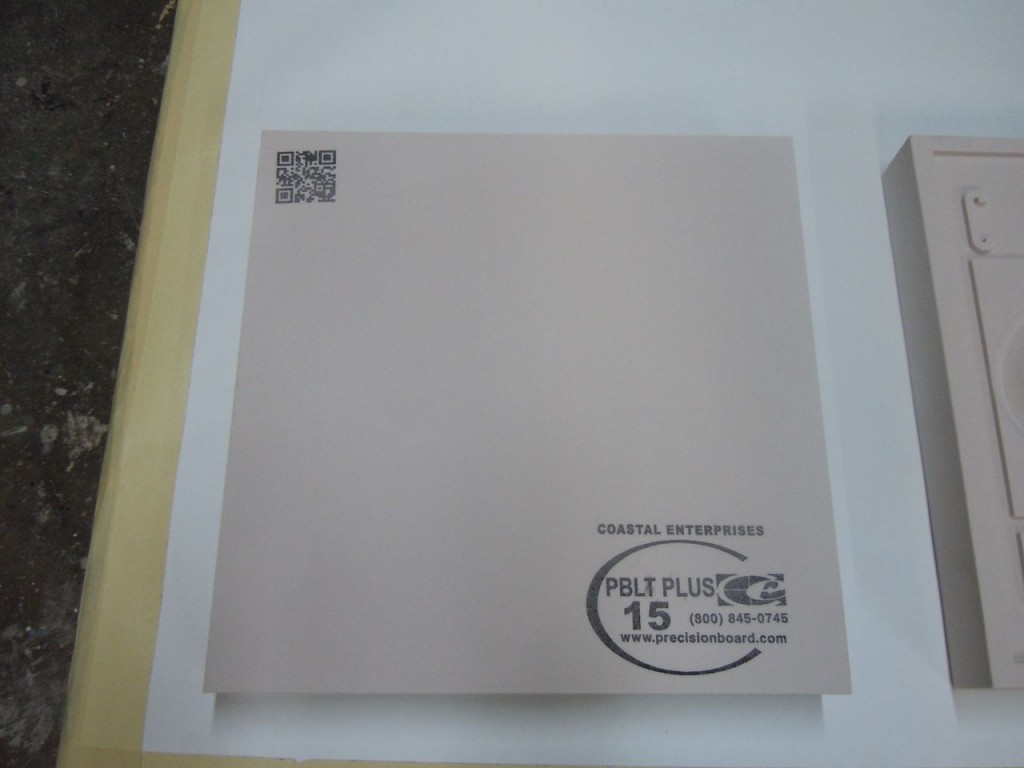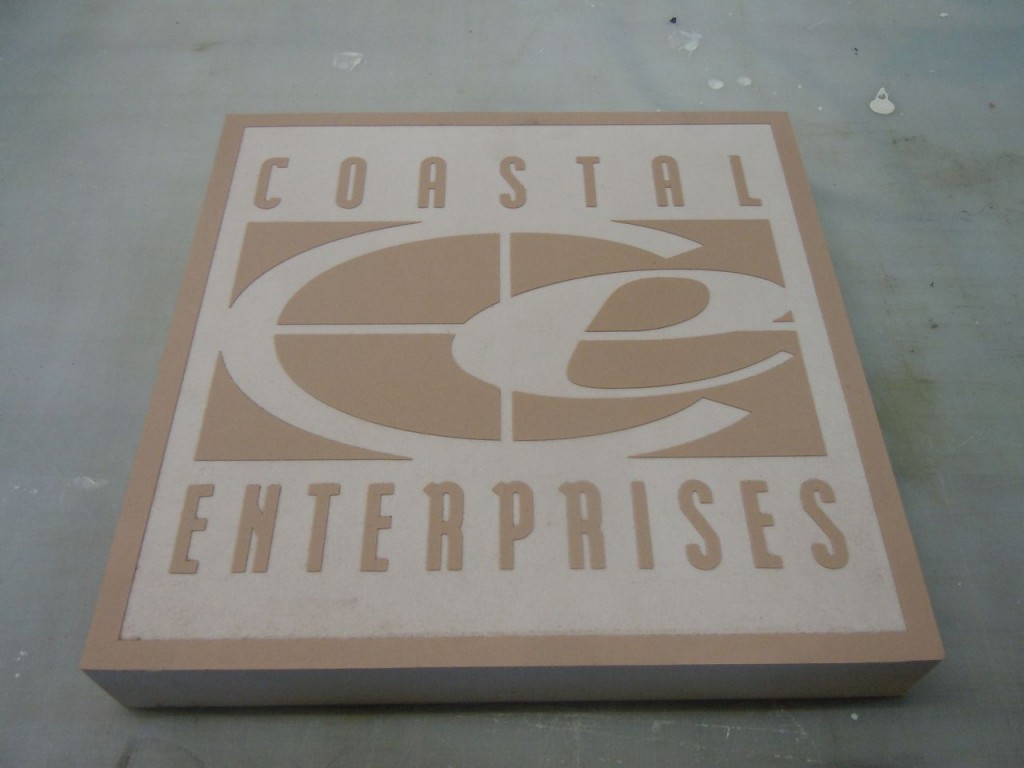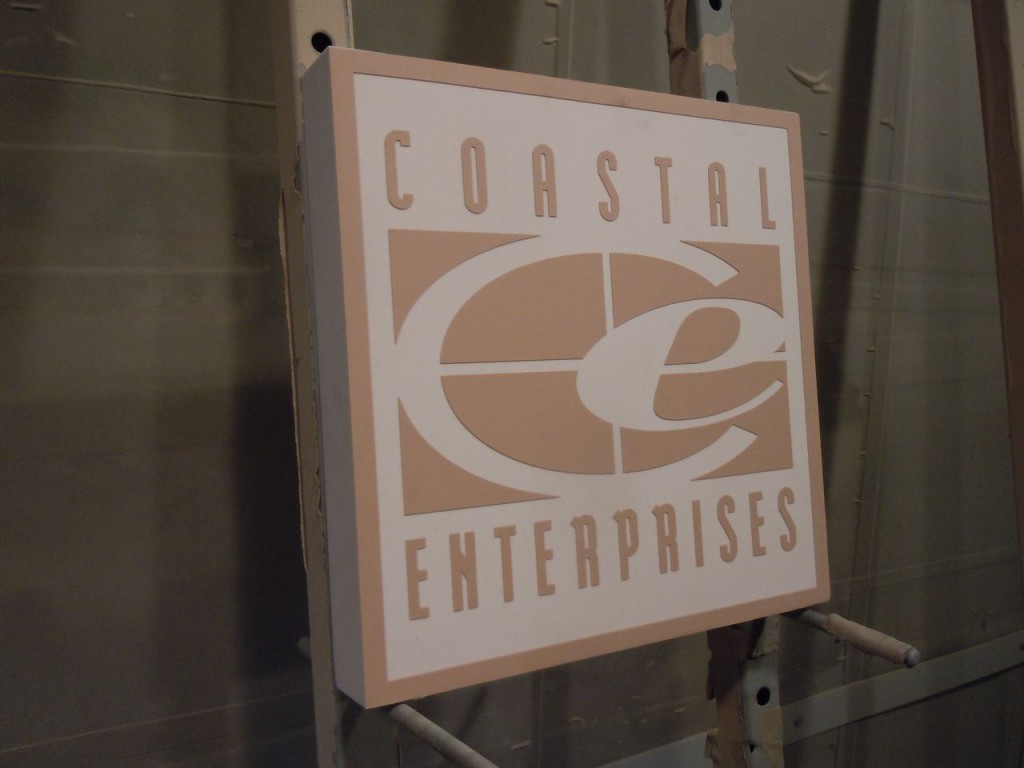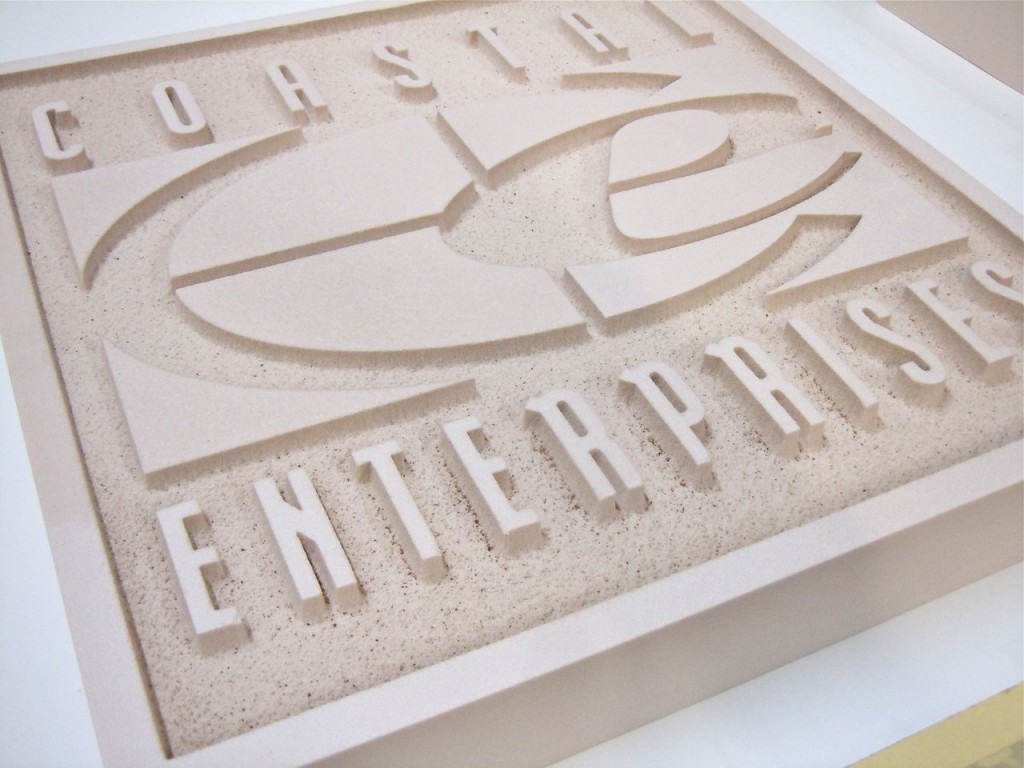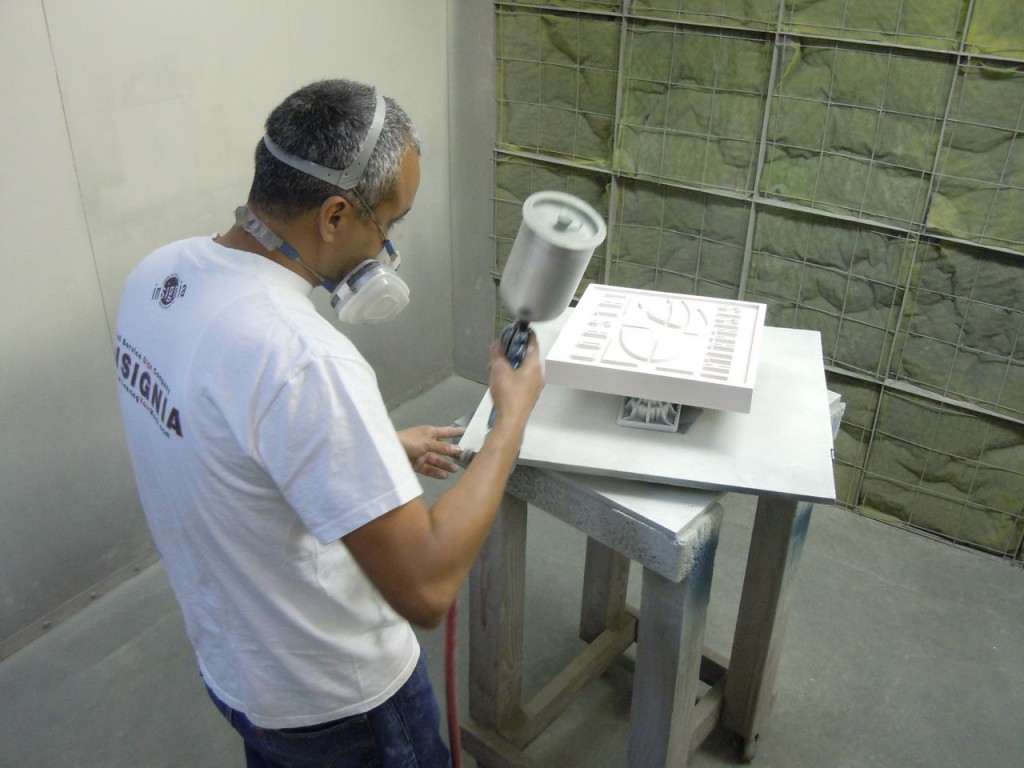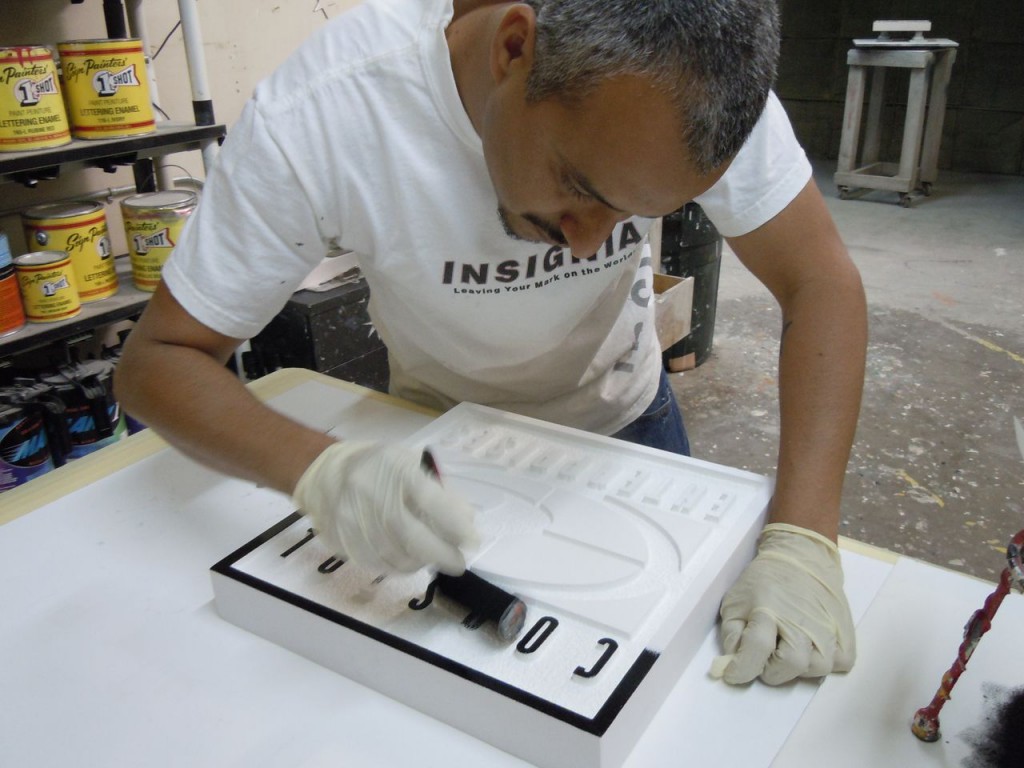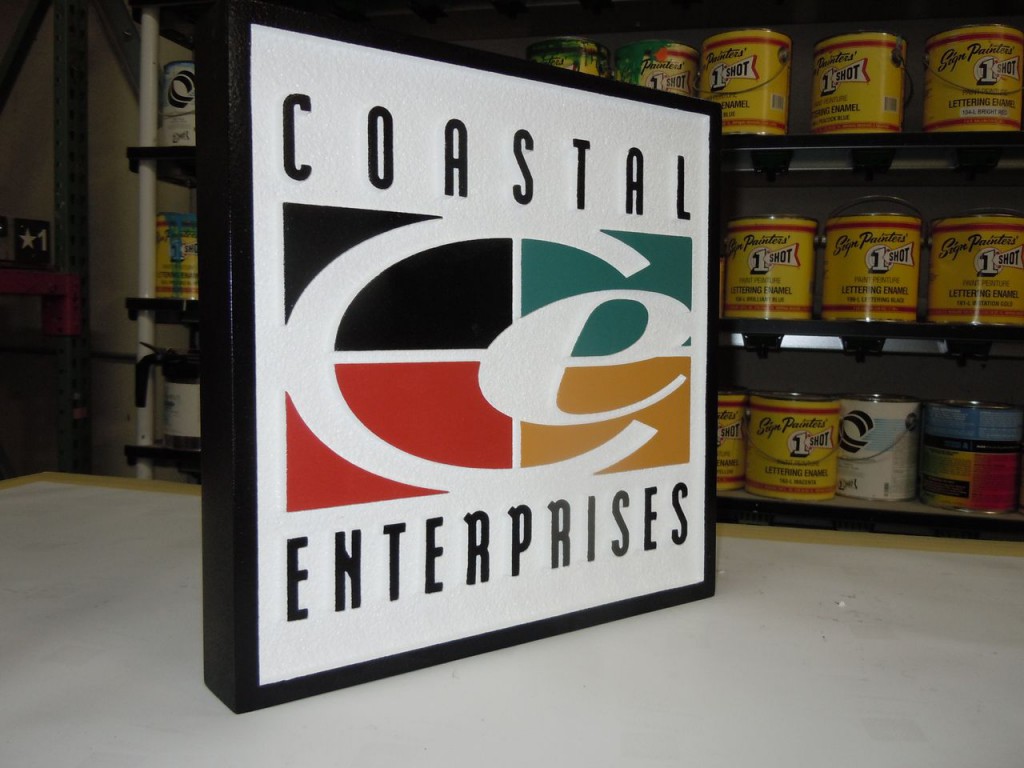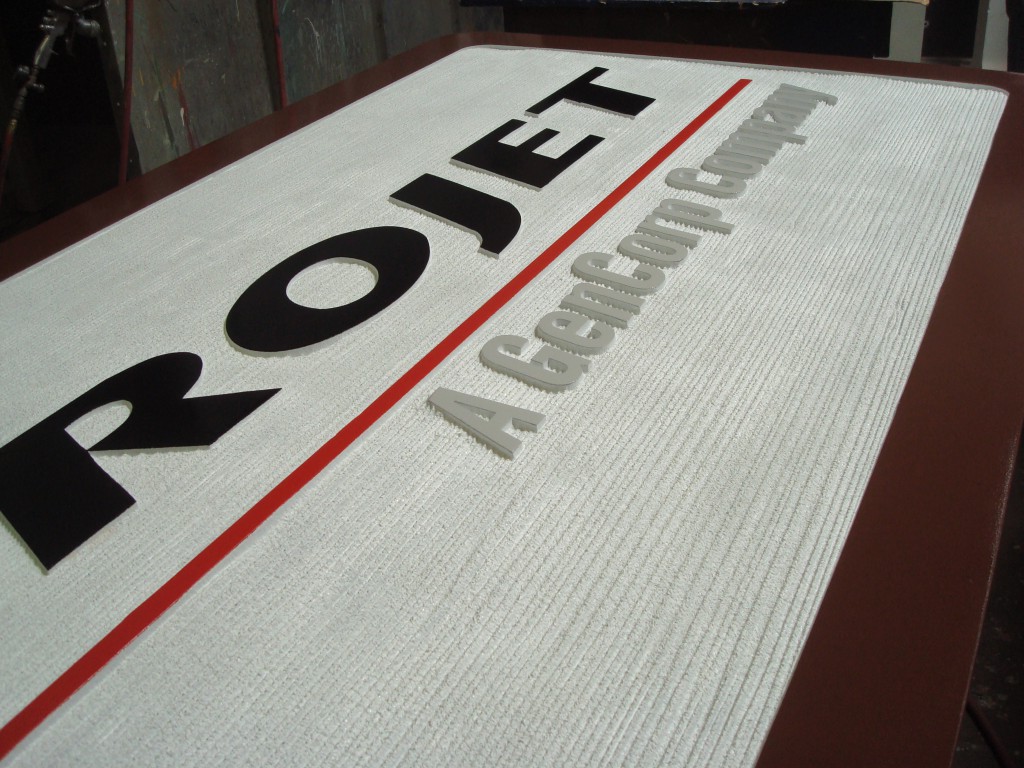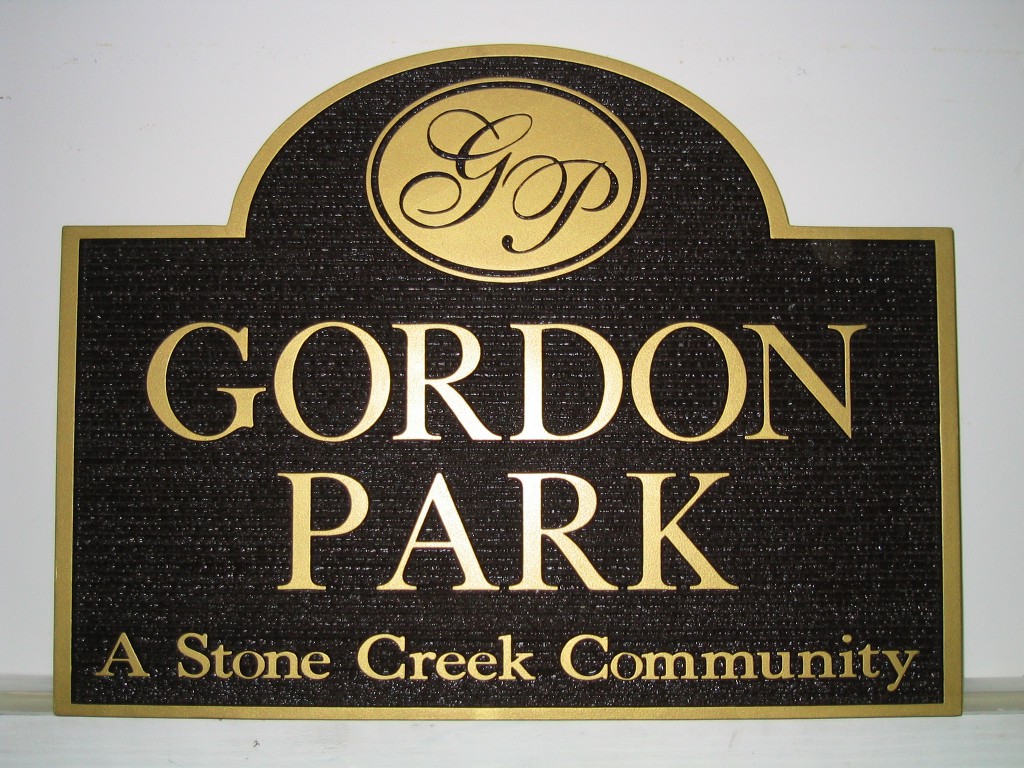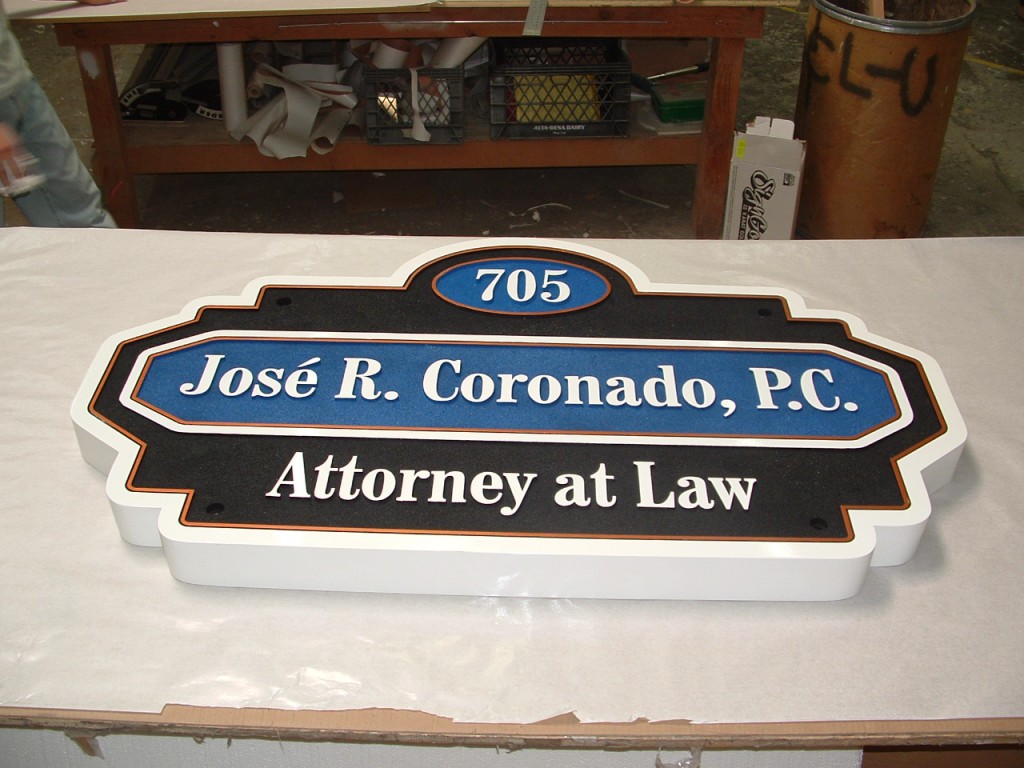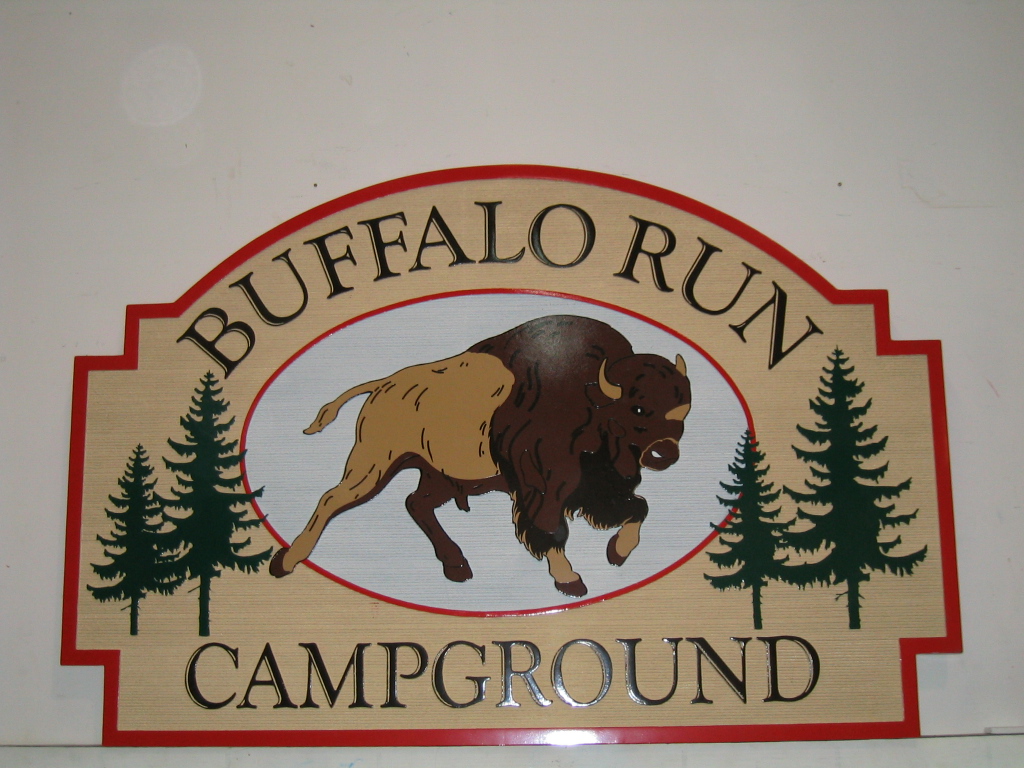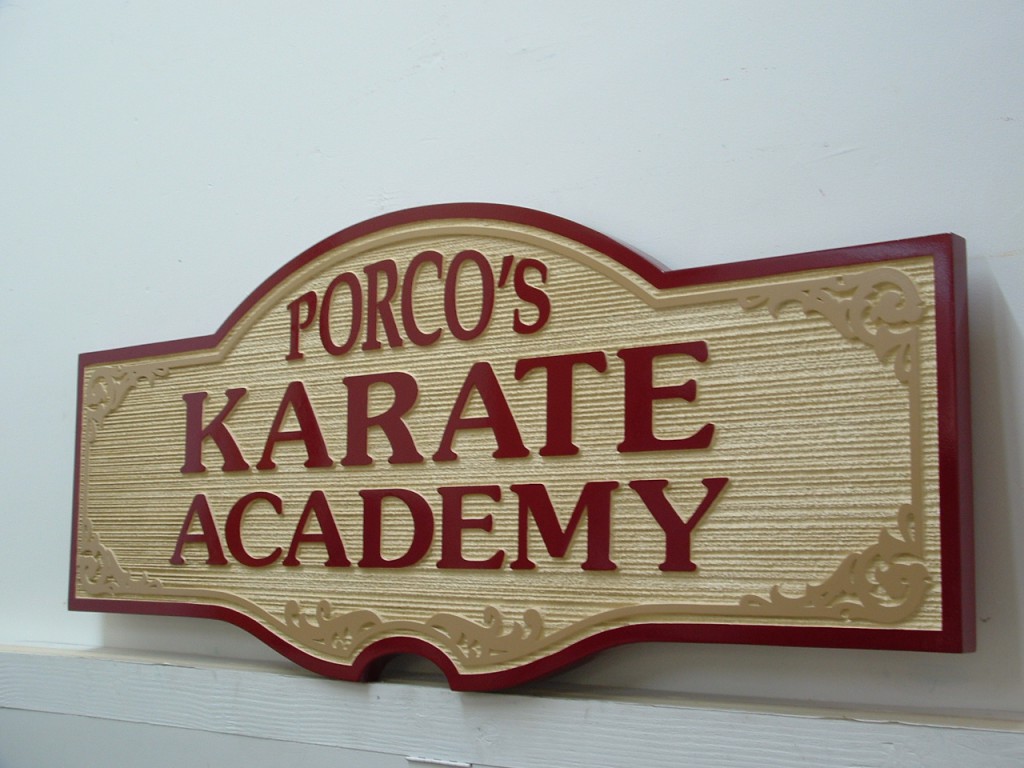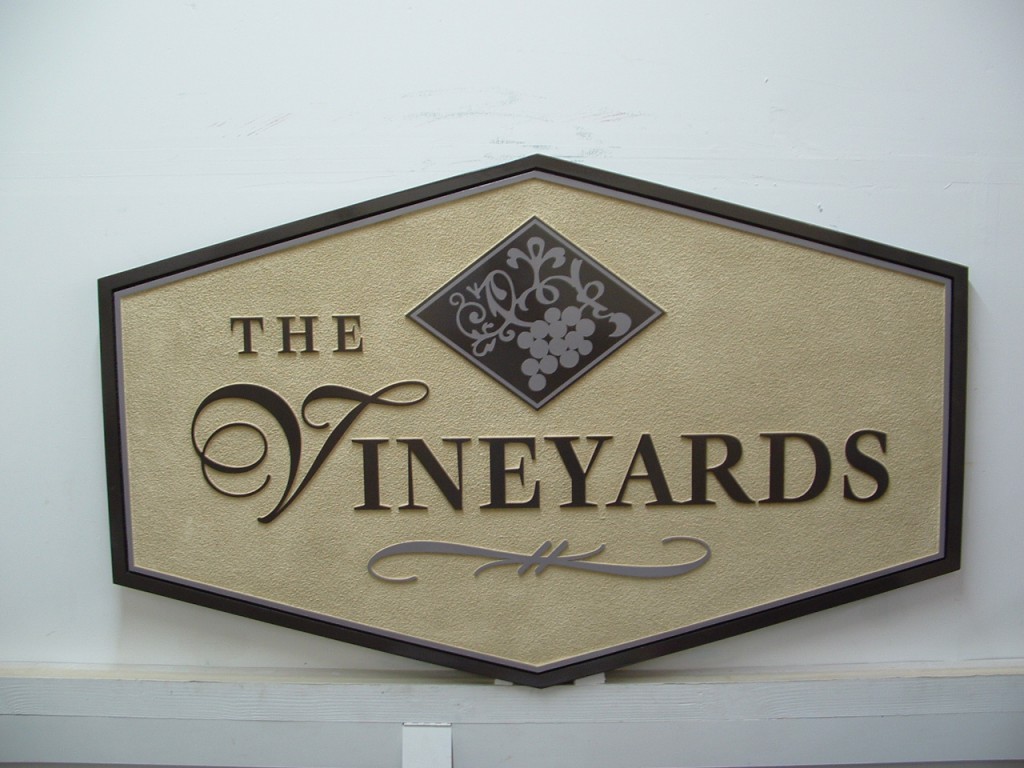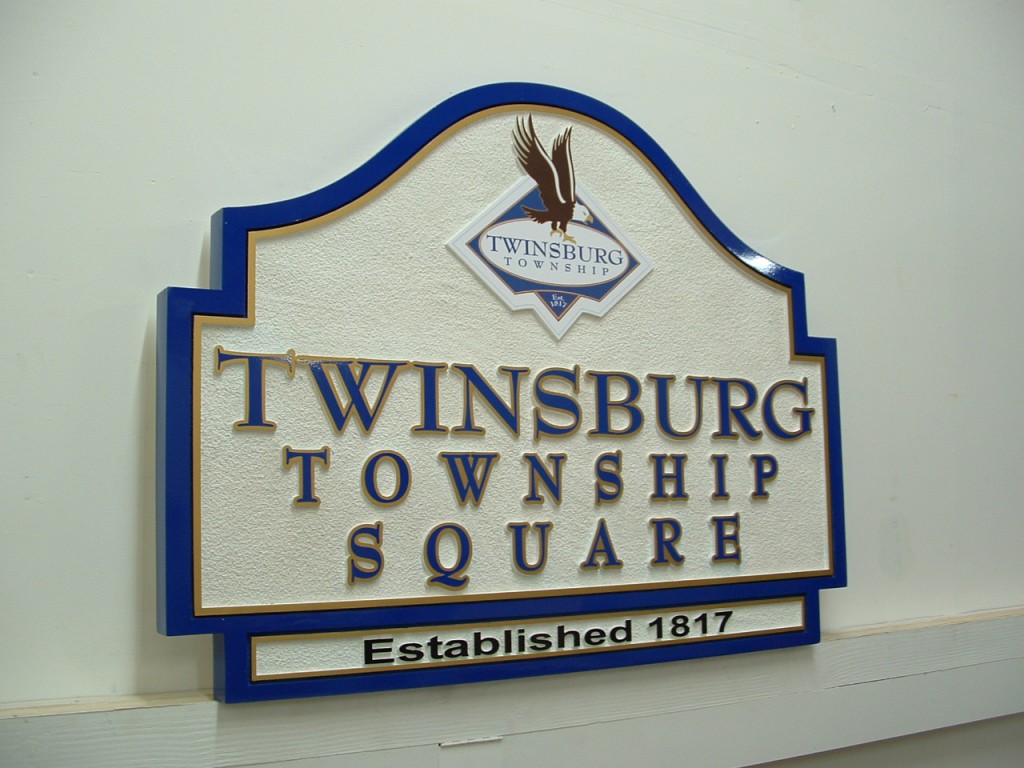Sandblasting HDU can allow for many more interesting and subtle textures than a wood sign. In addition to sandblasting much quicker than wood, it allows the sandblaster to move much closer to the surface. Because of the low blasting pressure, the detail and shapes can be much more subtle.
This sign was sandblasted and finished by Insignia, a full service sign shop based in Anaheim, CA. Having sandblasted signs for over 20 years, they are sandblasting experts!
Step 1: Masking the Precision Board
Sandblasting HDU is done by applying a vinyl mask weeded from digital coordinates that are input into a plotter, or weeded by hand. All parts of the sign that will be sandblasted are cut from the mask, protecting any smooth surfaces you wish to keep.
Several different types of sandblast mask are available, from low, medium and high tack. Use a medium tack mask for pre-primed HDU, and a high-tack mask for unprimed HDU.
Step 2: Sandblasting Precision Board
Sandblasting Precision Board is just like sandblasting a lightweight wood. Recommended blasting pressure must be approximately 60 psi max. at the pot. This will allow for the unique textures only available with HDU.
Since the blasting pressure is low, the grit moves slower and takes out small pieces of the background instead of pulverizing the surface. This also means that a smaller compressor can be used, allowing almost anyone to make their own sandblasted sign.
Popular types of sandblast grit include clay sand and aluminum oxide. The density of the grit depends on which type of texture you desire. A larger grit will allow for a rougher texture, and finer grit allows for a smoother texture. Joseph Westbrook, owner of Insignia, specified that this sign was sandblasted using a 60/90 blend of Red Ruby Garnet, which is a great media to blast with because it is sharp, cuts nicely and is uniform in size. Background texture largely depends on the size of the medium.
Step 3: Priming the Precision Board:
Since not all paints adhere to raw HDU for the long term, it is necessary to prime Precision Board prior to painting. Coastal Enterprises manufactures FSC-88WB, a single component water based primer/filler. Any primer that is made for HDU will also work. FSC-88WB is a high build primer, able to be used on materials other than HDU and can be sprayed, brushed or rolled. We also have an excellent step-by-step video on priming Precision Board.
Step 4: Finishing the Precision Board
Any type of paint can be used on Precision Board once it is primed with FSC-88WB. Many of our customers use 1-Shot Paints. Coastal Enterprises also offers a complete line of applicable textures and coatings that allow the priming step to be skipped.
This is an example of a sandblasted Precision Board HDU sign:
Step 5: Send Us Photos Of Your Project!
If you send us pictures of your Precision Board project, we would love to feature your company in a blog or a newsletter! You can submit your work here.
Additional Tips:
- Practice on test sheets. Request a free sample here.
- Move the nozzle as evenly as possible.
- Re-using old sandblast media can allow for better control and more detail
